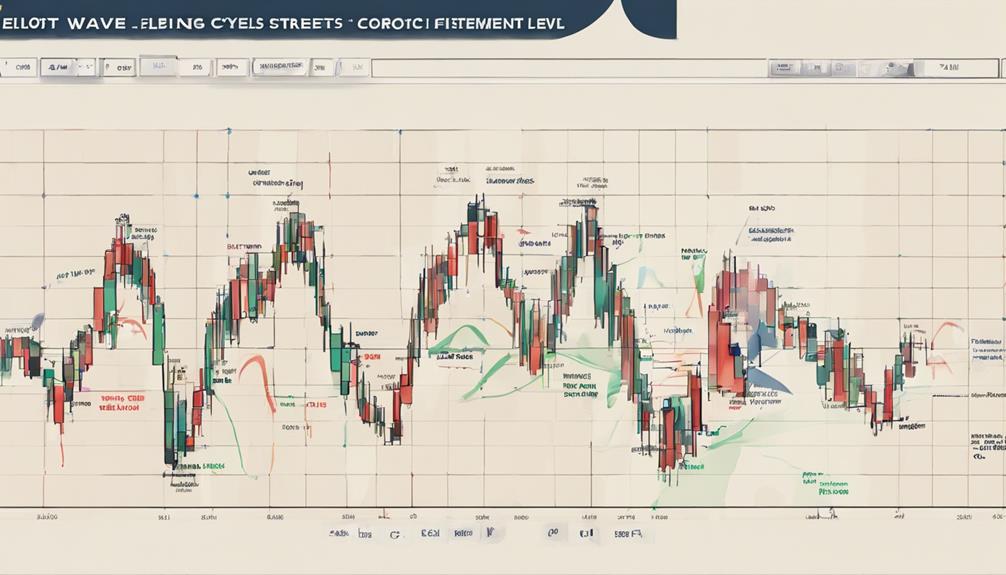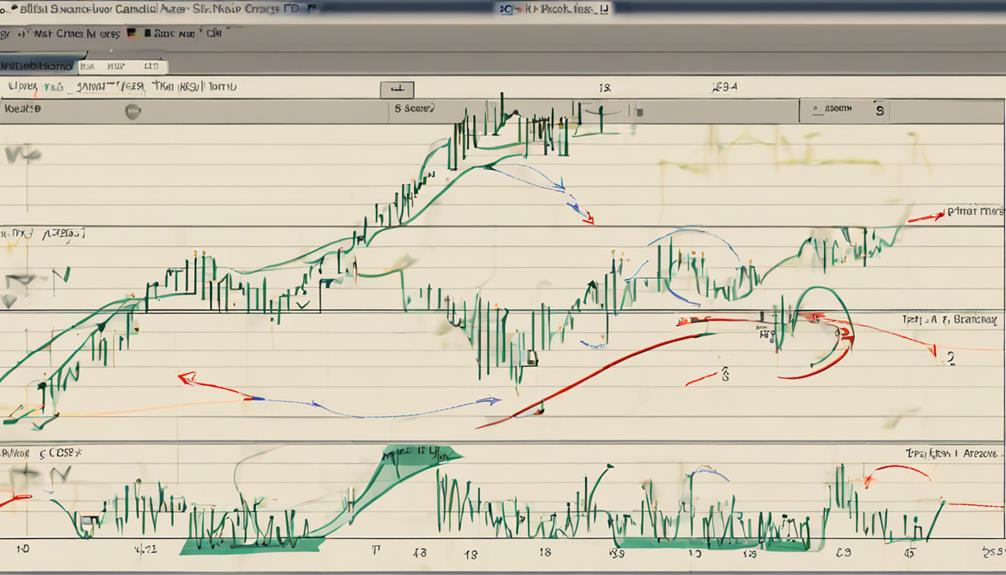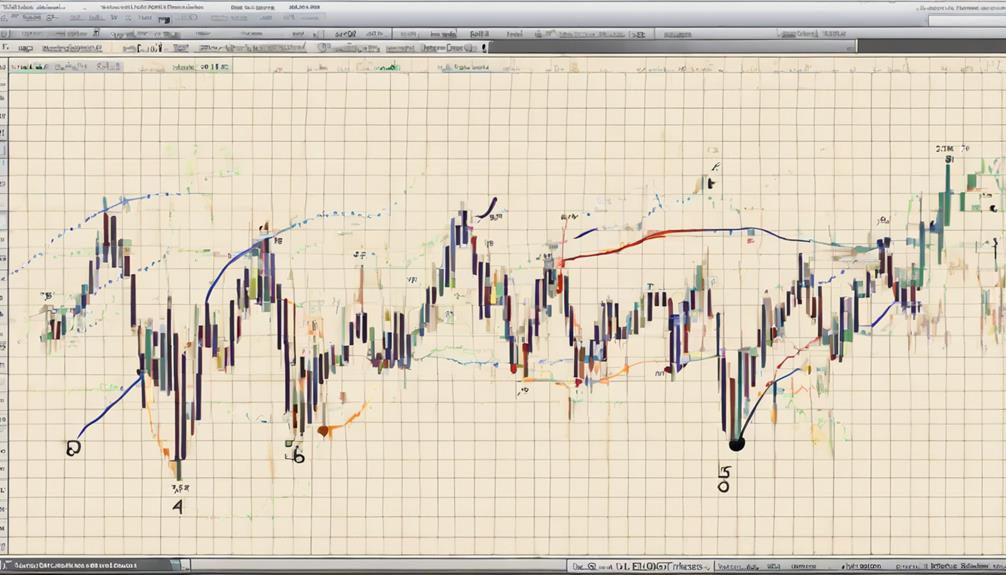The Comprehensive Guide to Elliott Wave Cycles serves as a roadmap for navigating the complexities of market dynamics through a structured lens of wave patterns. By examining the intricate interplay between psychology and market sentiment, this guide equips traders and investors with a unique perspective on forecasting future price movements.
From understanding the fundamentals of impulse waves to applying strategic trading techniques, the guide unravels the layers of Elliott Wave Theory with practical examples and insights.
As we explore further, the intricacies of wave patterns and their implications on market behavior reveal a compelling narrative that sheds light on the art of deciphering market cycles.
Basics of Elliott Wave Theory
The foundation of Elliott Wave Theory lies in its systematic approach to interpreting repetitive wave patterns in financial markets, providing traders and investors with valuable insights into market movements. The theory categorizes waves into impulsive waves, representing the major trend (1, 3, 5), and corrective waves (2, 4) that act as counter-trend movements.
By identifying and analyzing five-wave patterns followed by three-wave corrective phases, analysts can gain a deeper understanding of market behavior. Elliott Wave Theory operates on the premise that markets move in predictable cycles, allowing practitioners to anticipate potential price movements and turning points.
This methodical approach to analyzing wave patterns enables traders and investors to make informed decisions based on the expected direction of market trends. Understanding the basics of Elliott Wave Theory is essential for those looking to navigate the complexities of financial markets and leverage wave patterns to forecast market behavior effectively.
Wave Patterns and Fibonacci Levels

Building upon the foundation of Elliott Wave Theory and its systematic approach to interpreting market movements, the integration of Fibonacci retracement and extension levels plays a pivotal role in identifying potential reversal points within wave patterns. Fibonacci ratios such as 0.382, 0.500, and 0.618 are commonly utilized in Elliott Wave analysis to determine price targets with a high degree of accuracy. Wave patterns often exhibit strong correlations with Fibonacci levels, providing traders with additional confluence in their analysis and reinforcing the validity of potential turning points.
Corrective waves within Elliott Wave Theory frequently respect Fibonacci retracement levels, offering valuable insights into predicting probable reversal zones. By combining Elliott Wave Theory with Fibonacci levels, traders can enhance the precision of identifying critical support and resistance areas within wave cycles, enabling more informed decision-making processes.
- Elliott Wave Theory integrates Fibonacci retracement and extension levels to identify potential reversal points within wave patterns.
- Fibonacci ratios such as 0.382, 0.500, and 0.618 are commonly used in Elliott Wave analysis to determine price targets.
- Wave patterns often exhibit relationships with Fibonacci levels, providing traders with additional confluence in their analysis.
- Corrective waves in Elliott Wave Theory frequently adhere to Fibonacci retracement levels, aiding in predicting potential reversal zones.
Trading Strategies With Elliott Waves

Utilizing Elliott Wave Theory to formulate strategic trading approaches can provide traders with a systematic framework for identifying potential market trends and reversals. By recognizing impulse waves within the Elliott Wave structure, traders can strategically enter long positions as the market moves in the direction of the trend.
Conversely, as the five-wave sequence completes, indicating a potential reversal, traders can consider selling or shorting their positions to capitalize on the upcoming corrective patterns. The application of Elliott Wave Theory in trading strategies does not have a one-size-fits-all timeframe; it varies based on individual preferences and trading styles.
Day traders, for instance, may opt for shorter intraday time frames like hourly or 15-minute periods to align with shorter-term wave patterns. Successful forecasting of market trends through Elliott Wave Theory involves precise identification of wave sequences, enabling traders to make informed decisions.
Implementing practical stop-loss orders is crucial to manage risk effectively in line with the wave count and market conditions.
Limitations of Elliott Wave Theory

Given the complexity and nuances inherent in market analysis, it is essential to critically evaluate the limitations of Elliott Wave Theory to better understand its practical applications. While the theory can be a powerful tool in predicting market movements, it is not without its challenges:
- Traders often struggle to differentiate failed wave identification from the overall ineffectiveness of the theory.
- Elliott Wave Theory is most efficient when the overall market trend is clearly discernible.
- Challenges arise when trying to apply the theory in unpredictable or volatile market conditions.
- It is crucial for traders to exercise caution and consider alternative analyses to supplement the predictions made by Elliott Wave Theory.
These limitations highlight the importance of understanding the context in which Elliott Wave Theory is being used and the need for a comprehensive approach to market analysis that takes into account the unpredictable nature of market conditions.
Practical Examples of Elliott Wave Analysis

How do practical examples of Elliott Wave analysis provide insights into market trends and potential trading opportunities?
Real-world instances, such as analyzing Apple Inc. (AAPL) stock or the EUR/USD pair in Forex trading, showcase the application of Elliott Wave Theory. By identifying five-wave impulse moves and subsequent three-wave corrections in AAPL stock, traders can anticipate potential trend reversals or continuations.
In Forex trading, recognizing impulse waves as driving forces behind price movements helps traders make informed decisions. Corrective waves, particularly Wave C known for strong downward movements, offer opportunities for traders to enter or exit positions strategically.
Understanding complex corrections and wave extensions is essential for effectively using Elliott Wave Theory in the stock market and Forex trading. By studying practical examples and applying Elliott Wave principles, traders can enhance their market analysis skills and identify potential trading opportunities with more confidence and precision.
How Do Advanced Principles of Elliott Wave Cycles Fit into the Comprehensive Guide?
Understanding the advanced principles of Elliott Wave is crucial in creating a comprehensive guide. These principles help to analyze market cycles and predict future price movements. By incorporating these advanced principles into the guide, traders can gain valuable insights into market behavior and make informed trading decisions.
Frequently Asked Questions
What Is the Complete Cycle of Elliott Wave?
The complete cycle of Elliott Wave comprises 8 waves, with 5 impulsive waves (1, 2, 3, 4, 5) following the main trend and 3 corrective waves (A, B, C) moving against it. This cycle assists traders in predicting trend reversals and market movements.
How Do You Study Elliott Wave Theory?
In studying Elliott Wave Theory, practitioners analyze repetitive wave patterns to decipher market movements. By identifying impulse waves indicating trend direction and corrective waves reflecting market equilibrium, traders and investors utilize this technique for trend forecasting.
What Is the Best Elliott Wave Software?
The best Elliott Wave software integrates advanced wave analysis, Fibonacci tools, and pattern recognition to enhance market insights. Platforms like MotiveWave, WaveBasis, and Elliott Wave Analyzer offer comprehensive features for accurate wave counts and trend identification.
What Is the Best Indicator for Elliott Wave?
The MACD (Moving Average Convergence Divergence) stands out as a premier indicator for Elliott Wave analysis. Its ability to confirm wave counts, identify trend shifts, and pinpoint entry/exit levels makes it a crucial tool in enhancing technical accuracy and trading decisions.
Conclusion
In conclusion, the Comprehensive Guide to Elliott Wave Cycles offers a thorough exploration of Elliott Wave Theory, providing valuable insights into market analysis and trading strategies. While the theory may be a useful tool for some traders, its limitations and subjective nature warrant caution.
By understanding wave patterns, Fibonacci levels, and real-world examples, traders can navigate the complexities of market behavior.
Remember, in the world of finance, a wave may not always carry you to shore.
